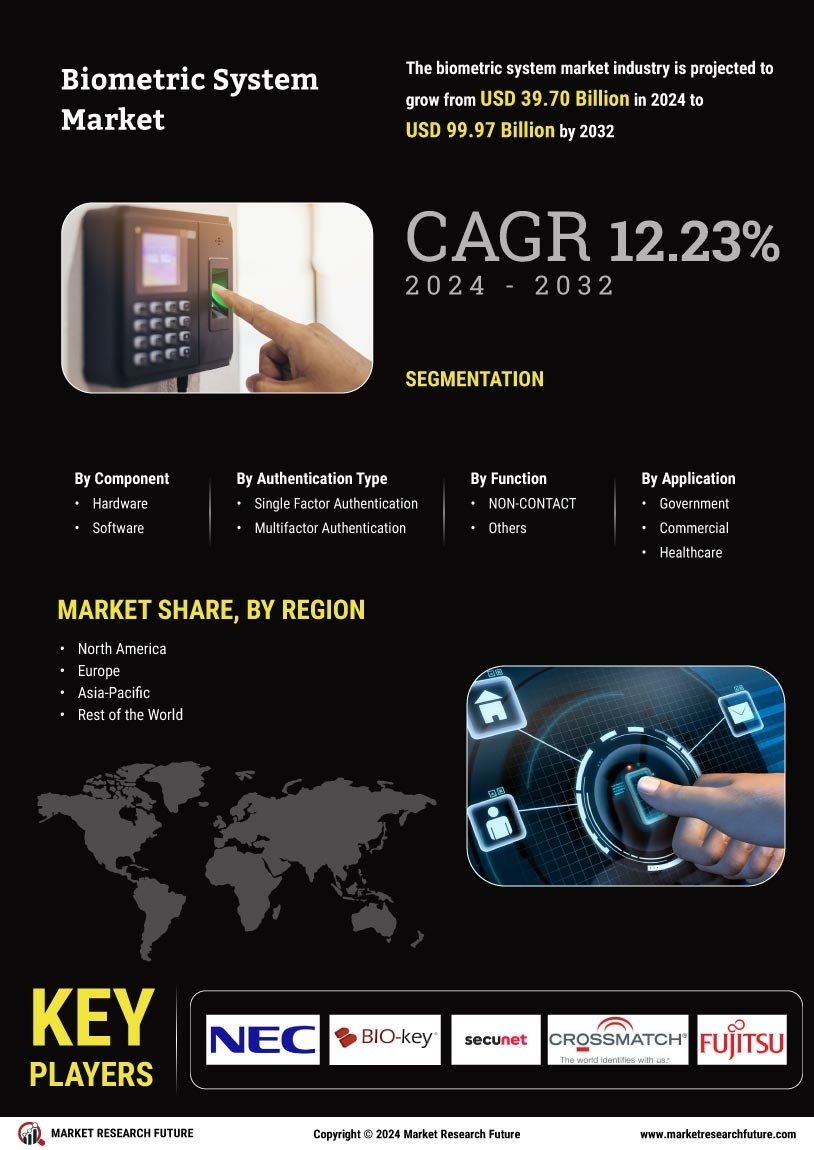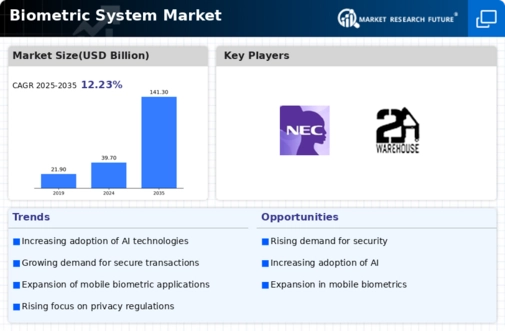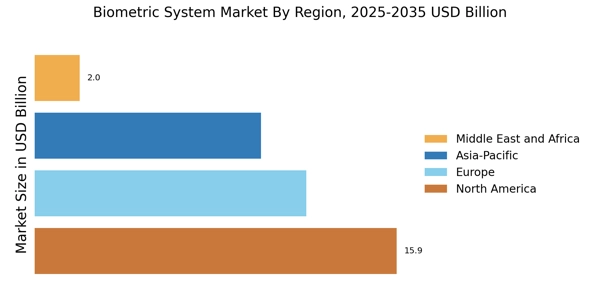Government Initiatives and Regulations
Government initiatives and regulations are significantly influencing the Biometric System Market. Many governments are implementing policies that encourage the adoption of biometric technologies for national security and public safety. For instance, initiatives aimed at enhancing border control and immigration processes are increasingly relying on biometric identification systems. Additionally, regulations surrounding data protection and privacy are prompting organizations to adopt biometric solutions that comply with legal standards. This regulatory landscape is expected to propel the growth of the Biometric System Market, as businesses seek to align with government mandates while enhancing their security protocols. The potential for government contracts in this sector further underscores the importance of compliance and innovation.
Increased Consumer Awareness and Acceptance
Increased consumer awareness and acceptance of biometric technologies are contributing to the growth of the Biometric System Market. As individuals become more familiar with biometric authentication methods, such as facial recognition and fingerprint scanning, their willingness to adopt these technologies in everyday applications is rising. Surveys indicate that a significant percentage of consumers express confidence in biometric systems for securing personal devices and online accounts. This shift in consumer perception is encouraging businesses to integrate biometric solutions into their products and services. Consequently, the Biometric System Market is likely to benefit from this growing acceptance, as more organizations recognize the value of providing secure and user-friendly authentication methods.
Rising Demand for Enhanced Security Solutions
The Biometric System Market is experiencing a notable surge in demand for enhanced security solutions across various sectors. Organizations are increasingly adopting biometric systems to mitigate risks associated with unauthorized access and identity theft. According to recent data, the biometric authentication market is projected to reach USD 50 billion by 2026, reflecting a compound annual growth rate of approximately 20%. This growth is driven by the need for robust security measures in banking, healthcare, and government sectors. As cyber threats evolve, the integration of biometric systems is seen as a proactive approach to safeguarding sensitive information. Consequently, the Biometric System Market is likely to expand as businesses prioritize security investments to protect their assets and maintain customer trust.
Technological Advancements in Biometric Systems
Technological advancements are playing a pivotal role in shaping the Biometric System Market. Innovations such as facial recognition, fingerprint scanning, and iris recognition are becoming increasingly sophisticated, enhancing the accuracy and reliability of biometric systems. The introduction of artificial intelligence and machine learning algorithms is further refining these technologies, enabling real-time processing and improved user experience. Market data indicates that the facial recognition segment alone is expected to grow at a CAGR of 15% through 2027. As these technologies evolve, they are likely to be integrated into various applications, including access control, time and attendance tracking, and identity verification, thereby driving the growth of the Biometric System Market.
Growing Need for Identity Verification in Financial Services
The financial services sector is witnessing a growing need for identity verification solutions, which is driving the Biometric System Market. With the rise of digital banking and online transactions, financial institutions are increasingly adopting biometric systems to authenticate users and prevent fraud. Market analysis suggests that the biometric payment segment is projected to grow significantly, with an expected market size of USD 10 billion by 2025. This trend is largely attributed to the need for secure and seamless customer experiences. As financial institutions prioritize security and customer satisfaction, the adoption of biometric technologies is likely to become a standard practice, further propelling the Biometric System Market.

















Leave a Comment